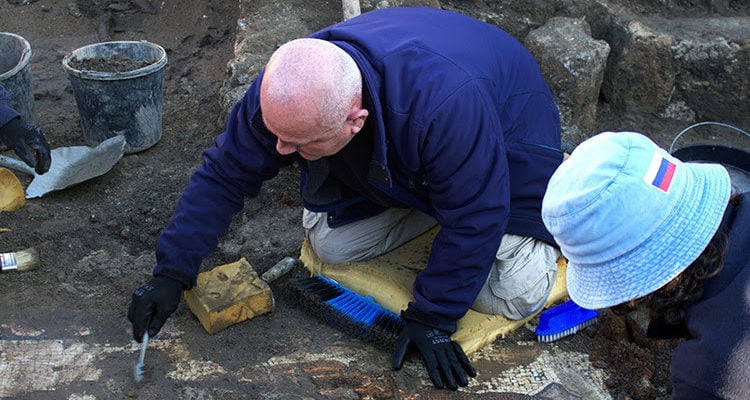Israeli archaeologists have uncovered a rare, multicolored mosaic dating to the Roman period in Caesarea, the ancient seat of power.
By: Aryeh Savir, World Israel News
Israeli archaeologists have recently unearthed a remarkable, rare, multicolored mosaic dating to the Roman period in the Caesarea National Park, on Israel’s coast.
The Roman mosaic, from the 2nd–3rd centuries CE, was uncovered during an archaeological excavation that is part of the largest conservation and reconstruction project ever undertaken in Israel, with an investment of over NIS 100 million. The project is part of reconstruction work on the impressive Crusaders-era entrance bridge to Caesarea.
The dig uncovered part of a large, opulent building dating back 1,500 years to the Byzantine period.
Scholars believe the building was part of an agora, a large public area for commerce and socializing. The archaeologists were later surprised to find a spectacular mosaic from an even earlier building dating back about 1,800 years
Dr. Peter Gendelman and Dr. Uzi Ad, directors of the excavation for the Israel Antiquities Authority (IAA), stated that the colorful mosaic, measuring more than 3.5 x 8 meters, “is of a rare high quality.”
It features three figures, multicolored geometric patterns and a long inscription in Greek, which were damaged by the Byzantine building constructed on top of it. The figures, all males, wear togas and apparently belonged to the upper class. The central figure is frontal and the two other face him on either side.
“Who are they? That depends on what the building was used for, which is not yet clear,” they said. “If the mosaic was part of a mansion, the figures may have been the owners. If this was a public building, they might have represented the donors of the mosaic or members of the city council.”
Jacques Nagar, head of the IAA Art Conservation Department, said that the mosaic was executed at a very high artistic level, of a type that can be found in places like Antioch in Turkey.
The images were depicted using small, densely placed tesserae, with about 12,000 stones per square meter.
Current archaeological excavations in Caesarea, which represent a continuation of excavations from the 1990s, have uncovered ancient artifacts and ruins dating back to the time of King Herod, 37 BCE to 4 CE, until the Crusader period, 1095-1291 CE.
Ancient Seat of Power
This small Israeli coastal town was once the seat of the Roman power in the region, from which the Romans ruled for several centuries. The town was built by Herod the Great at about 25–13 BCE as the port city Caesarea Maritima. At the time, Herod, the Roman ruler of Israel, was engaged in several ambitious architectural projects in Israel, including the mass renovation of the Second Temple in Jerusalem and the development of Caesarea.
Caesarea served as the administrative center of the Roman province of Judea, which was part of the Roman Empire.
The new city was built to meet the requirements of a provincial capital, and included markets, wide roads, baths, temples to Rome and Augustus, and imposing public buildings.
The city further served as a cultural center, and every five years the city hosted major sports competitions, gladiator games, and theatrical productions in its theater overlooking the Mediterranean Sea. The amphitheater and hippodrome still stand today.
Over the coming centuries, the city knew many lords and owners, but it did not return to its early splendor.
Today, Caesarea attracts more than 700,000 Israeli and foreign tourists every year, one of the three most visited sites in Israel.





